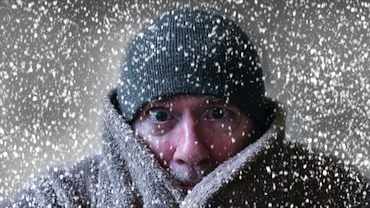 The effects of the polar vortex last winter are still lingering in Upstate New York, where 24,000 households had their power shut off in June and July due to unpaid bills, reports Syracuse.com.
The effects of the polar vortex last winter are still lingering in Upstate New York, where 24,000 households had their power shut off in June and July due to unpaid bills, reports Syracuse.com.
The utility National Grid terminated “more accounts in both June and July than it has in any month for at least nine years,” reports Syracuse.com. The recent spike in terminations comes as more people are unable to pay for gas and electricity this year in the wake of one of the coldest winters in recent memory. The electrical grid and gas pipeline system in New York and New England was on the verge of failing last winter due to frigid temperatures and inadequate pipeline infrastructure. Natural gas prices skyrocketed as there wasn’t enough pipeline capacity to get to fuel in the region. Syracuse.com reports that National Grid customers paid $316 million for power in March 2014, up from $203 million in Month 2013.
This huge spike in power prices has caught the attention of state regulators who fear that people could resort to less healthy, off-grid ways of heating their homes. New York and New England have some of the highest electricity prices in the country. One reason for this is because both of these regions have been ditching coal-fired power in favor of natural gas because of global warming concerns. But the huge boost in natural gas-fired power has meant the region is more susceptible to huge price swings when gas demand skyrockets, especially in the winter time. High power prices from the harsh winter have persisted in New York even into the summer time.
According to government data, New York had the second-highest residential electricity prices in the country at 20.88 cents per kilowatt hour in June. A bigger concern for operators in the Northeast is what could happen this coming winter if temperature plunge and snowstorms once again pummel the country. As coal plants are shut down due to federal environmental regulations federal regulators are worried of possible blackouts.
“We’re closing an enormous amount of coal generation, through a variety of rules, and a good number of those plants are set to retire next April,” Philip Moeller, chairman of the Federal Energy Regulatory Commission, told Platts Energy Week. “But most people would say about 90% of that capacity was running and used and necessary during the polar vortex events.” “So the question is: Are we going to have mild weather for the next 2-3 years? If so, we can probably get through it,” Moeller said.
“But if we have more extreme weather events, like we had this winter, and that power is no longer available, we could be in a real situation that’s not good for consumers.” “Last winter’s generator performance-when up to 22 percent of the utility PJM’s capacity was unavailable due to cold weather-related problems-highlighted a potentially significant reliability issue,” according to a planning document by the utility PJM which serves 13 eastern states and the District of Columbia. “PJM’s analysis shows that a comparable rate of generator outages in the winter of 2015/2016, coupled with extremely cold temperatures and expected coal retirements, would likely prevent PJM from meeting its peak load requirements,” the document noted.
